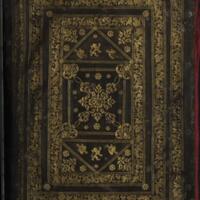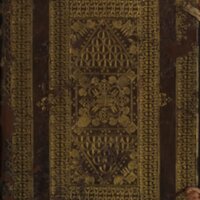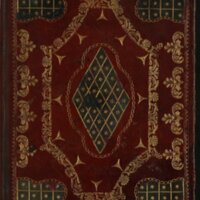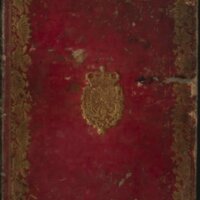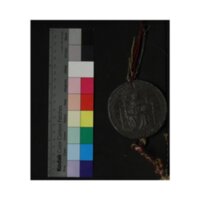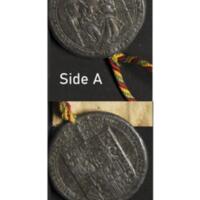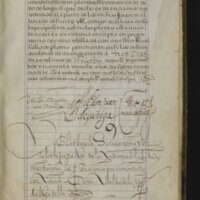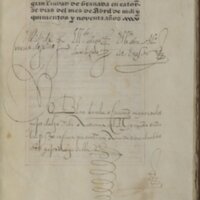Cartas Ejecutorias
Ostentation and Authenticity
Bindings
The binding of a carta ejecutoria was made to order and varied depending on its owner's budget and tastes. Some were covered with rich fabrics such as velvets and brocades, while others were covered in leather and featured gold or blind tooling. Tooled patterns included abanico (fan) bindings made up of circular and semi-circular designs; plateresque bindings made up of concentric rectangular tooled borders; and the more heavily ornamented tipos populares bindings, which represented a transition between the plateresque and the later baroque style. All were meant to convey the wealth, power, and tradition of the family whose documents are enclosed within. [7]
Although many of the ejecutorias in this collection have fine bindings, several are bound in simple parchment, the humblest and least expensive of all binding materials at the time. It is interesting to note that two of the parchment bindings in the collection have envelope flaps, a distinctive feature of Islamic bookbinding. One of these bindings is featured in the gallery below.
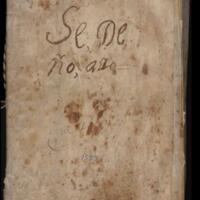
Parchment binding with ink inscription, Sentencia y carta executoria de hidalguía de Pedro Sedeño, 1553.

Parchment binding with envelope flap and toggle closures, Carta executoria de hidalguía for Antonio Gutierrez and his sisters, 1566.
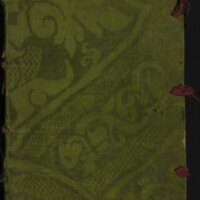
Silk damask binding with remnants of silk ties, Carta ejecutoria de hidalguía dada a pedimiento de Juan Caro, 1572.
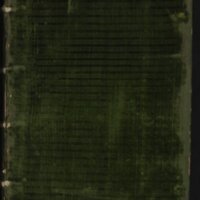
Velvet binding, Carta ejecutoria de hidalguía in favor of Diego López de Valcárcel the elder, and his children Diego López de Valcárcel, Gómez de Valcárcel, and Ana de Valcárcel, 1578.
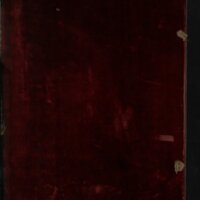
Velvet binding with remnants of silk ties, Executoria de hidalguía en posesión y propiedad a pedimiento de Francisco de Porres, 1586.
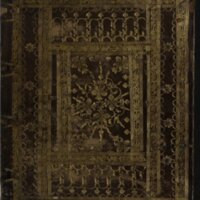
Tipos populares binding with a central fan pattern, Carta executoria de hidalguía a pedimiento de Francisco Guisado Franco, 1588.
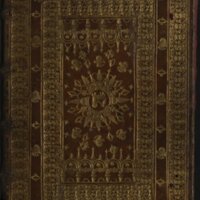
Tipos populares binding with a central fan pattern, Carta executoria de hidalguía a pedimiento de Andrés Sánchez Manteca, 1594.
Seals and Cords
All ejecutorias would have been accompanied originally by a lead seal hanging from silken cords, a sign of the document's authenticity. This seal is referred to in the text of each ejecutoria in a formulaic phrase, such as this example from the ejecutoria of Blas Davalos:
Y de esto mandamos dar y damos al dicho Blas Davalos esta dicha nuestra carta ejecutoria escrita en pergamino de cuero y sellada con nuestro sello de plomo pendiente en hilos de seda a colores.
[And by this we order to be given and we give to the aforementioned Blas Davalos this our executive letter written on parchment and sealed with our lead seal hanging from colored silk cords.]
Due to the weight of the seal and the need for metal in subsequent generations, few seals have survived. However, a handful are preserved in this collection.
Notary's Marks and Signatures
The most important page in the ejecutoria is the least decorated. This is the page that is signed and attested by members of the royal chancery and officials of the Sala de Hijosdalgo. Many of these officials signed numerous ejecutorias during their careers. Note, for example, the selection below, all of which were signed by Diego Mesía de Frías, an attorney who was chief of the Sala de Hijosdalgo at the Royal Chancery of Granada for more than forty years. His signature is often accompanied by those of Diego Lucio Lucero and Alonso de Erazo, two other members of the Sala de Hijosdalgo, and by the certification of Blas Varela, a scribe and notary of the chancery.
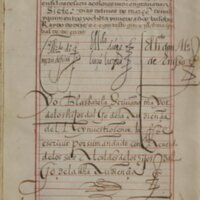
Carta executoria de hidalguía de Juan de Maqueda Balderrama, signed by Diego Mesía de Frías, Diego Lucio Lucero, and Alonso de Erazo, and certified by Blas Varela, scribe and notary of the chancery, 1589.
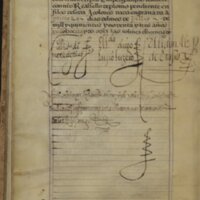
Carta executoria de hidalguía dada a pedimiento de doña Guiomar de Alarcón Ulloa, signed by Diego Mesía de Frías, Diego Lucio Lucero, and Alonso de Erazo, and certified by Francisco de Baltazar, scribe and notary of the chancery, 1593.

Carta executoria de hidalguía a pedimiento de Alonso de Cárdenas, signed by Diego Mesía de Frías, Diego Lucio Lucero, and Alonso de Erazo, and certified by Blas Varela, scribe and notary of the chancery, 1593.
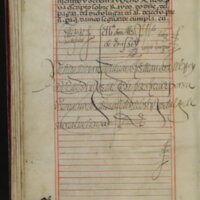
Carta executoria de hidalguía a pedimiento de Francisco Guisado Franco, signed by Diego Mesía de Frías, Diego Lucio Lucero, and Alonso de Erazo, 1588.
